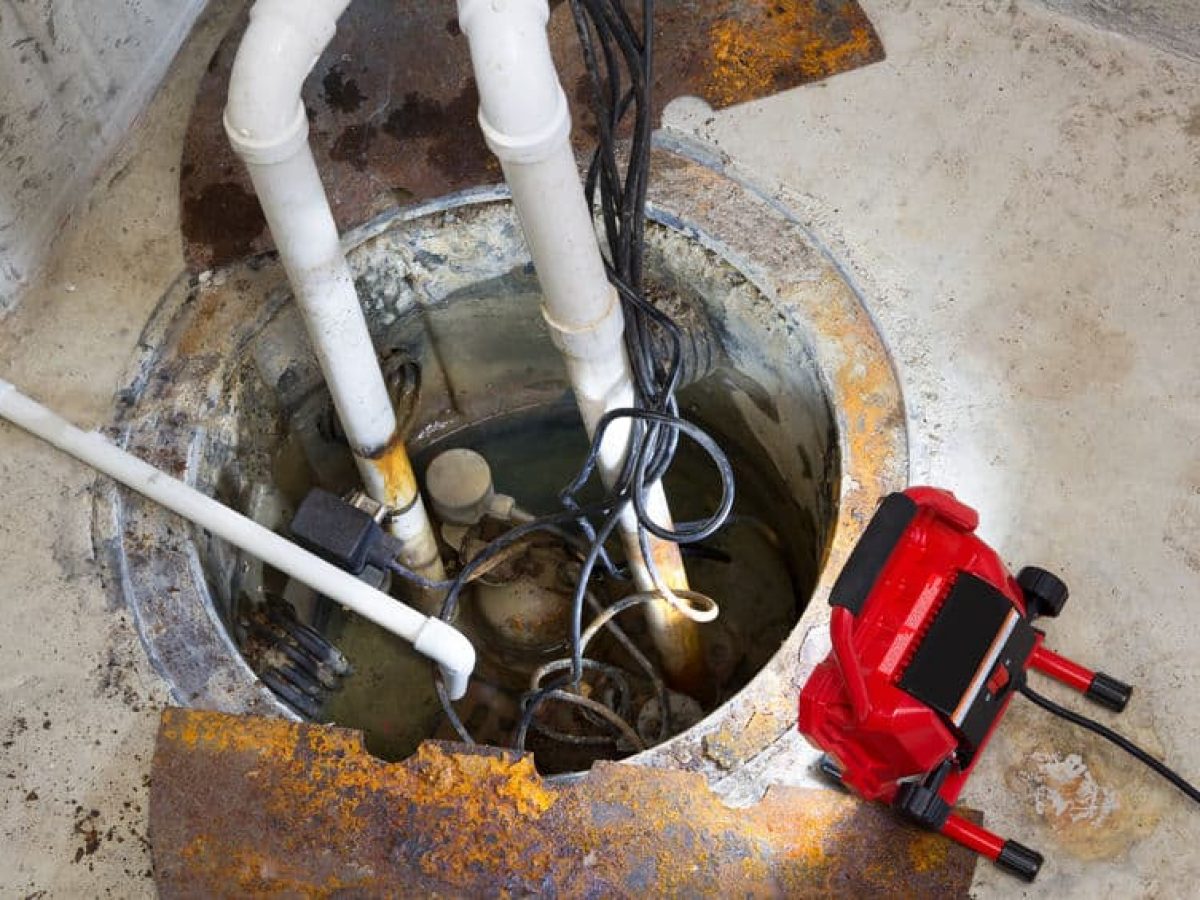Effective Tips for Caring for a Sump Pump
Effective Tips for Caring for a Sump Pump
Blog Article
The content down the page about How to Care for Your Sump Pump is amazingly insightful. You should investigate it.

Sump pumps are important parts in lots of homes, especially in areas susceptible to flooding or extreme dampness. They aid protect against water damage by efficiently eliminating excess water from basements or crawl spaces. Nevertheless, like any other device, sump pumps call for regular maintenance to ensure they function properly when required one of the most. Cleaning your sump pump is a crucial part of its upkeep, and understanding exactly how to do it properly can save you from costly repairs and possible catastrophes.
Introduction
Maintaining a clean sump pump is important for its proper functioning and longevity. Disregarding this vital job can result in clogs, malfunctions, and ultimately, water damages to your building. Therefore, learning how to clean a sump pump is important for property owners who rely upon these tools to maintain their cellars dry and secured.
Understanding the Sump Pump
Before diving right into the cleaning procedure, it's vital to have a standard understanding of how a sump pump functions. Typically installed in a pit or container listed below the cellar floor, a sump pump includes a number of crucial components, including a pump, a float button, and a discharge pipe. When water builds up in the pit, the float switch triggers the pump, which then pumps the water out through the discharge pipe, away from the structure's structure.
Indications of a Dirty Sump Pump
Recognizing when your sump pump requires cleaning is essential for preventing prospective breakdowns. Some common signs that show a filthy sump pump consist of odd sounds during procedure, decreased water circulation, and visible particles in the pit. If you notice any one of these symptoms, it's important to cleanse your sump pump quickly to prevent any additional issues.
Preparing for Cleaning
Prior to you start cleansing your sump pump, it's vital to take some safety and security preventative measures. Beginning by turning off the power to the pump to stay clear of any electric crashes. Furthermore, wear appropriate protective gear, such as handwear covers and goggles, to protect yourself from dust, particles, and possible virus.
Step-by-step Overview to Cleaning a Sump Pump
Turning off the Power
Begin by separating the power supply to the sump pump to prevent any type of crashes while cleaning.
Getting Rid Of Particles and Dust
Make use of a pail or an inside story to get rid of any kind of noticeable debris, dirt, or debris from the sump pit. Dispose of the particles correctly to prevent it from blocking the pump or the discharge pipe.
Cleansing the Pump and Float Switch Over
When the pit is free from particles, very carefully eliminate the pump from the pit. Check the pump and the float switch for any type of indications of damage or wear. Utilize a soft brush or cloth to clean the surface areas and eliminate any gathered crud.
Purging the System
After cleansing the pump and float switch, flush the sump pit with clean water to get rid of any type of remaining dirt or sediment. This will certainly help guarantee that the pump runs smoothly and efficiently.
Looking For Appropriate Performance
Prior to reinstalling the pump, execute a quick examination to guarantee that the float switch turns on the pump correctly. Pour some water right into the sump pit and observe the pump's operation. If every little thing is functioning appropriately, you can reassemble the pump and reconnect the power supply.
Upkeep Tips to Keep Your Sump Pump Clean
In addition to routine cleaning, there are numerous upkeep pointers you can follow to keep your sump pump in optimal condition:
Conclusion
Cleaning your sump pump is an important aspect of its maintenance and makes certain that it runs efficiently when you need it one of the most. By complying with the steps described in this overview and incorporating regular upkeep right into your routine, you can expand the lifespan of your sump pump and safeguard your home from water damages.
6 STEPS ON HOW TO CLEAN A SUMP PUMP PROPERLY
UNDERSTANDING SUMP PUMPS
Your sump pump plays a crucial role in protecting your home by managing and removing excess water. It primarily functions as a “shield”, guarding your basement against the damaging effects of water accumulation. The pump is housed in a sump pit in the lowest part of your basement, and its job is to pump out any water that collects there.
During heavy rainfalls or when snow melts rapidly, water can infiltrate your basement, posing potential risks like flooding, structural damage, and harmful mold growth. Here, the sump pump springs into action, pumping out the intruding water and directing it away from your home.
SAFETY FIRST
Before cleaning, remember to prioritize safety. Disconnect the sump pump from the power source to prevent any accidental electric shocks. Also, wear sturdy gloves to protect your hands from any sharp or dirty components within the pump.
REMOVE THE SUMP PUMP
After ensuring your safety, the next step is to remove the sump pump from its pit. Doing this might require careful maneuvering as you don’t want to damage any pump components. Once removed, clean the sump pit to remove any accumulated debris or sludge.
INSPECT THE PUMP
Inspect the pump for any visible signs of wear or damage. Check the power cord, float switch, and impeller housing. If any components look worn out or damaged, consider replacing them to ensure optimal performance.
CLEAN THE PUMP
Thoroughly clean the pump with warm, soapy water. Make sure to rid it of any dirt, gravel, or other debris that might impede its performance. You can use a toothbrush to clean the small, hard-to-reach parts of the pump.
REINSTALL THE SUMP PUMP
Reinstall the pump into the sump pit Make sure it’s positioned correctly to remove the water effectively Once it’s back in place, reconnect it to the power source TEST THE PUMP
Finally, pour some water into the pit to ensure the pump works correctly. It should start automatically and begin pumping out the water; if it doesn’t, check the power source and the positioning of the pump.
Remember, while cleaning your sump pump is an essential part of home maintenance, hiring a professional plumber for a thorough inspection and cleaning at least once a year is also important. This will ensure that your pump is in optimal condition, ready to protect your home from potential water damage.
BEST PRACTICES FOR CLEANING SUMP PUMP DISCHARGE PIPES
Regular Inspection: Regularly inspect your discharge pipes, especially during heavy rainfall or snowmelt periods. Look for any signs of blockage or damage. Early detection of problems can prevent serious issues down the line. Periodic Cleaning: Over time, sediment and debris can accumulate in the discharge pipes, impeding the flow of water. Regular cleaning helps keep the pipes clear and functioning efficiently. You can use a high-pressure water jet to effectively clean the pipes. Insulation During Winter: In colder climates, discharge pipes can freeze, blocking the outflow of water. Protect your discharge pipes from freezing temperatures by insulating them with foam pipe insulation. This will ensure the sump pump can continue to discharge water even in freezing conditions. Proper Positioning: The discharge pipe should be positioned to direct water away from your home’s foundation. Improper positioning can lead to water seeping back into the basement. Ensure the pipe is long enough and angled correctly. Installation of a Check Valve: A check valve prevents water from flowing back into your sump pit after the pump has pushed it out. Installing a check valve helps maintain the efficiency of your sump pump and reduces the risk of flooding. Minimize Pipe Turns: Every curve or turn in the discharge pipe can decrease the efficiency of water flow. By minimizing turns and bends in your discharge pipe, you can increase the efficiency of your sump pump. https://www.fullspeedplumbing.com/how-to-clean-a-sump-pump-properly9999/

As a serious reader on How to Care for Your Sump Pump, I figured sharing that piece of content was worthwhile. If you liked our article if you please do not forget to share it. We thank you for your readership.
Book Your Installation Report this page